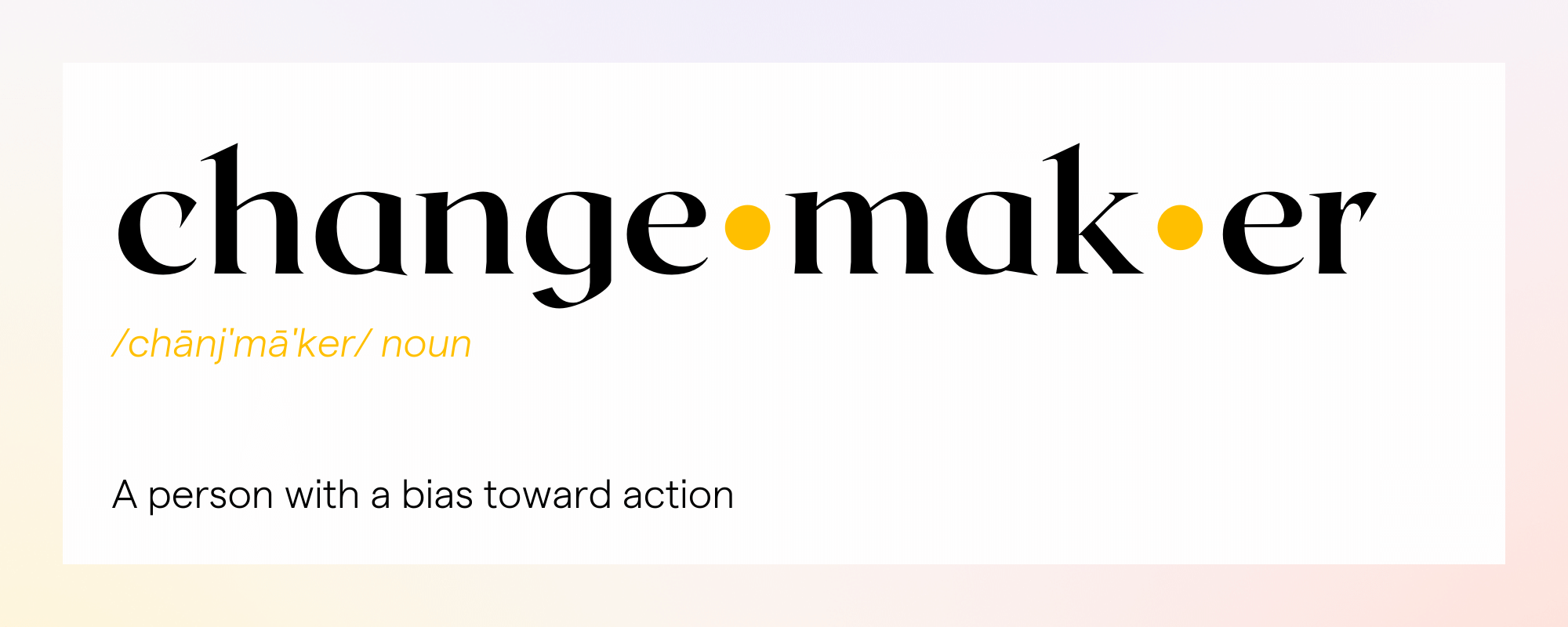
The journey of a trailblazer
Being a change maker is not for the faint of heart. It requires vision, resilience, and the courage to face resistance head-on. It’s about challenging the status quo, stepping into uncharted territories, and blazing a trail that others can follow. It’s about breaking new ground and paving the way for something transformative. But what is it really like to lead this kind of change, to be the one who stands at the front, defying the norm? Well, it’s like being a pioneer, except instead of a compass and a map, you’re equipped with dog treats and a whole lot of passion.
The spark of inspiration
Every change maker has a defining moment, a spark that ignites the drive to push boundaries. For me, that spark came early in my career when I realised that the traditional methods of dog training were outdated and, at times, harmful. The punishment-based systems were deeply ingrained in the industry, and on television, a certain Caesar figure took dog training back to the dark ages. I believed that dogs and humans should be a team, not adversaries—partners who trust and understand each other.
This belief led me to create a philosophy that became the foundation of my work:«Be your dog’s best friend.« It was about fostering a deep connection based on trust, empathy, and two-way communication —rather than fear or force. I wanted to show that dogs don’t need to be controlled through dominance or punishment to be well-behaved; they need to be understood and guided with kindness and empathy.
I also realised that, alongside this philosophy, I wanted to create a more empowering approach to training—one where both the dog and the human feel in control. This led to the development of the choice and control based concept: “The Dog is the Boss”. The idea is simple: dogs, like humans, should have a say in the learning process. By giving them the freedom to make choices, they become more engaged, motivated, and emotionally connected to the learning experience. It’s not just about teaching a dog to obey; it’s about allowing them their own voice to become the best versions of themselves.
So, when I opened one of the first reward-based dog schools in Norway, it was born out of this desire to offer an alternative to the harsh practices that dominated the field. At the time, my approach was revolutionary, and I faced a lot of skepticism. But the vision of a better world for dogs and their humans kept me moving forward. It wasn’t just about training dogs; it was about creating relationships built on trust and mutual respect. And I suppose it was a bit like planting a flag in the ground, saying, “Hey, there’s another way, and it’s going to be pawesome!”

Sowing seeds: Planting the future of change
Sowing seeds is a powerful metaphor for the work of a change maker. Operating GoodDog School, it felt like planting the seeds of a new way of thinking. This idea was fresh, untested, and somewhat like a science experiment—minus the lab coat. I had to be patient and trust that, with care and persistence, the idea would grow into something meaningful.
Like planting seeds in the ground, my vision required time, patience, and care. I couldn’t expect immediate change, and I knew that people wouldn’t instantly embrace this new way of training dogs. The soil wasn’t fertile for this kind of transformation just yet, but I believed in it, and I kept sowing the seeds of positive change, step by step. It wasn’t an instant success—it was a process of gradual growth. And sometimes, it felt like watching grass grow—frustratingly slow but, eventually, undeniably real.
Just as a plant’s roots need time to spread, I needed time to build trust in my methods. The seed I planted wasn’t just about training dogs; it was about changing the way people thought about animals and their needs. And though it felt like an uphill battle at times, I knew that the seeds I sowed would eventually grow and impact the future of dog training—just like those plants that take years to produce their first fruit.
The road less traveled: Walking alone
When I first introduced the concept of giving dogs choice and control over their lives, I faced skepticism, ridicule, and resistance. People didn’t understand it. They questioned the validity of my approach. It felt as though the more I pushed forward, the more I was met with disdain from those entrenched in traditional methods. It was very tough at times, but I knew that tough moments were part of the journey.
But it wasn’t just a matter of disagreement—it was a journey that echoed the well-known phrase: “First they ignore you, then they laugh at you, then they fight you, and finally, they join you.” Well, guess what? We’ve reached the stage where they’re fighting us, and that’s actually a sign of progress! In fact, we’re even seeing some brave traditional trainers crossing over and joining us on the modern side—and they are more than welcome!
Yet, through the mockery and opposition, I stood firm in my beliefs, knowing that change requires this kind of provocation. There can be no progression without provocation. If you don’t challenge the existing order, if you don’t disrupt the status quo, then nothing ever changes. That’s what I came to understand: true innovation comes from breaking the rules and pushing boundaries—something that often feels like a battle, but one that is necessary for progress. So yes, I was the crazy one—but someone has to be.
Facing fear and doubt
As a trailblazer, fear and doubt are constant companions. When I ventured into uncharted territory with my philosophy, I wasn’t just challenging established dog training practices—I was challenging the very foundation of how people thought about their dogs and their behaviour. Every new idea I presented was met with an array of emotions: fear, confusion, and disbelief.
It was hard not to second-guess myself when so many people were telling me I would never make it, being so different from the ordinary. But I learned that these struggles—these moments of doubt—are part of the journey. The resistance wasn’t just external; it was internal, too. I had to confront my own fears and keep going, even when it seemed like the world was telling me to turn back. The key was resilience. The more they fought, the more I knew I was on the right path. In the end, it was like trying to walk a tightrope—balancing fear and excitement, but I kept walking.
Your Tribe: The ones who love you – until they don’t
One of the most complicated aspects of being a change maker is managing your tribe. As I began to grow my school and my influence in the dog training community, I built a group of supporters—people who believed in me and my vision. They loved me for raising my voice and challenging the system.
However, there’s an interesting paradox that comes with being a trailblazer: the very people who cheer you on are often the ones ready to go at your throat the moment you say something they disagree with. The expectations placed on me were high, and the pressure to be perfect was immense. One misstep, one shift in direction they were not ready for, and the very same tribe who once stood by me could quickly turn against me.
That’s the price of being a leader. Change is never smooth, and when you push forward, you inevitably stir things up. Some will follow, others will challenge you, but all of it is part of the process of transformation. It’s never easy, but it is always necessary. It’s like being the head chef—you can’t please everyone, but you can certainly stir the pot!
Change only comes from breaking the rules
True change only happens when we break the rules. Whether it’s challenging outdated dog training methods or confronting societal norms, real progress comes from daring to break away from conventional thinking. My journey was never about following the rules—if I had, I would have stayed within the confines of what was comfortable and familiar. But that wouldn’t have led to the transformation I knew was possible.
In the dog training world, the rules were set by decades of tradition, and they were limiting. They focused on dominance, and fear. But by breaking those rules and showing that dogs could learn through positive reinforcement and choice, I created a new rulebook—one that was kinder, more effective, and based on empathy. Change only comes when we’re willing to step outside the boundaries, take risks, and break the very rules that hold us back.
Om du inte tar några kamper kan du heller aldrig vinna
This Swedish phrase—“If you don’t take any battles, you can never win”—became a mantra for me as I faced the challenges of building a dog school outside of the norm. I realised that, without struggle, there could be no victory. The battle for change is not just a professional challenge but a personal one as well. It demands perseverance and an unwavering belief that things can be better.
When you fight for what you believe in, you may lose some battles, but you’ll win the war. This philosophy kept me grounded during times of doubt. It reinforced the idea that the work I was doing wasn’t just for today, but for the future of dog training and animal welfare. Much like the pursuit of the perfect dog treat, the challenge was tough—but absolutely rewarding.
The Legacy of a Change Maker: The future you create
Ultimately, being a change maker is about the legacy you leave behind. It’s not about recognition or accolades; it’s about the impact you make and the future you create. For me, GoodDog School was never just about changing how we train dogs—it was about reshaping the bond between humans and animals. It was about creating a new reality where compassion and understanding guide our interactions, and where every dog is treated with empathy.
As a trailblazer, you realise that your journey isn’t just about your own success. It’s about creating a foundation, a stepping stone for others to follow and build upon. The path you pave today shapes the future that others will walk tomorrow. And in that, your impact is both profound and lasting.
The journey of a lifetime
Being a change maker, a trailblazer, is one of the most difficult yet rewarding paths you can take. It’s about being willing to stand alone when necessary, to fight when needed, and to break the rules when required. Change doesn’t happen without provocation. Progress comes when we challenge the old, when we break free from the norms, and when we dare to dream of a different, better world.
As a change maker, you don’t just transform your own life—you transform the lives of those around you and the world at large. And that, after all, is the greatest gift you can give. And in the end, the real success isn’t just about breaking barriers—it’s about building better connections.